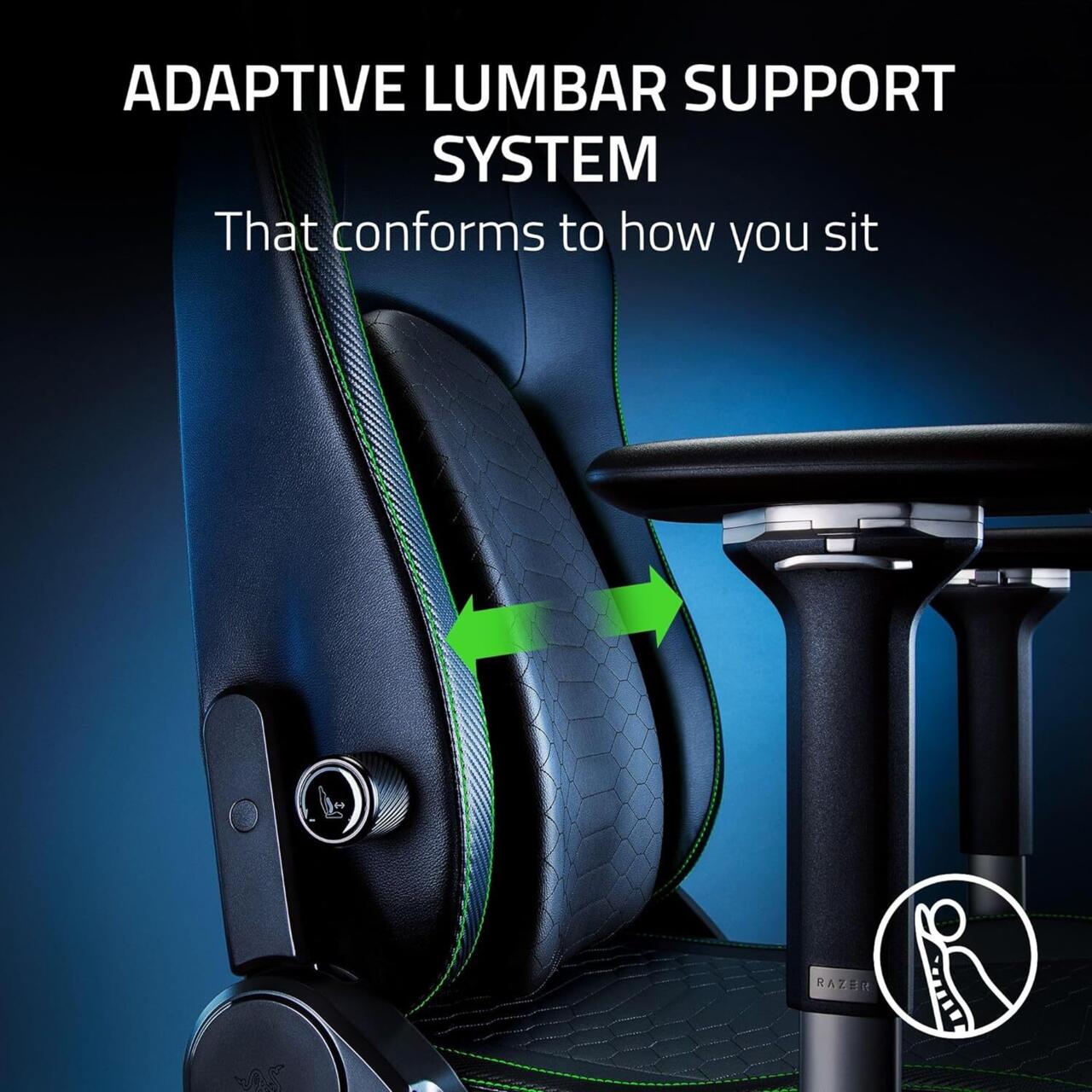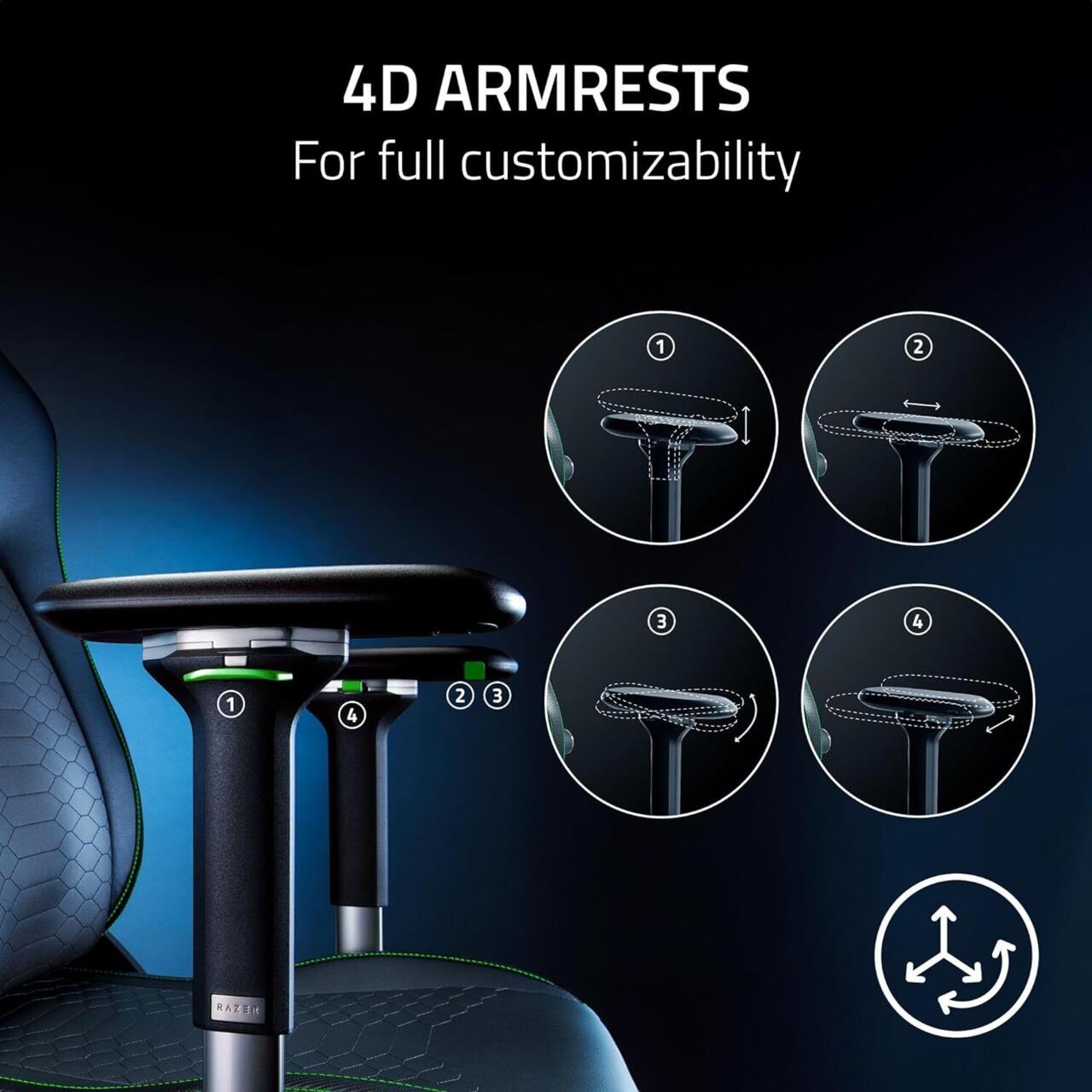My natural inclination when hearing a phrase like "adjustable 6D" lumbar system, one of the signature features of the Razer Iskur V2 gaming chair, is to be skeptical. It sounds like a marketing line meant to sound incomprehensible but appealing--that's more Ds than my current chair, surely, so it must be better. Although I can't claim to know whether the technology on display here justifies such an ornate descriptor, the Iskur V2 is nonetheless a terrific chair with an impressive number of customization options.
I've spent the last several weeks with the Iskur V2, putting it through heavy use--long work days where I don't stand as often as I should that segue into evenings sitting at the same desk to play Helldivers 2. As with my previous chair, the Razer Enki, I initially experienced some back discomfort as I adjusted to the new setup. But whereas the Enki offered no adjustments to its lumbar support, the Iskur V2 allows you to both tweak the lumbar curve as well as the height of it to match people of different sizes. That meant experimenting to figure out what actually felt right, which took some time--was I experiencing some back pain because I was becoming accustomed to proper support, or because I had mispositioned that support?

Eventually, I sorted this out and found a good level of comfort. But what I came to appreciate most about the Iskur V2's 6D lumbar support is the way in which the back moves with you from side to side. I spend a lot of time in my chair each day, and invariably I fidget. I unconsciously want to lean to the side, sit on a leg, or do something to disrupt the proper posture. The Iskur V2 seems to facilitate these compulsions nicely: The wide base is very comfortable and ensures I can cross a leg to mix up my seating position, and as I lean from one side to another, the back leans with me, offering me some degree of lumbar support even when I am not sitting perfectly upright. Should you spend a ton of time deviating from the recommended posture? Probably not, but many of us are going to do so anyway, and I'm glad the chair doesn't get in my way of sitting where and how I want to.
Also offering a welcome degree of flexibility are the armrests. I was a big fan of the 4D armrests on the Enki, and that remains true here. Being able to have a great deal of control over their height and being able to move them forward and backward, left and right, and point them in or out allows you to find an option that works for your desk setup. If you're like me, most of these settings are something you'll set up initially and then rarely touch again. I have found, much to my surprise, that I enjoy angling my left armrest inward, providing more surface area for my arm to rest on as it sits on my keyboard. Doing the same with the right one during longer typing sessions was also pleasant, but the trouble here is in developing the habit of making that adjustment--a lifetime of armrests facing directly forward typically causes me to forget this is even an option.

Similarly, the ability to recline at up to 152 degrees landed more in the "nice to have" category than something I found any regular use for. When seated at my desk, I'm usually directly engaged with a keyboard and mouse, meaning I want to be relatively upright. Being slightly reclined when playing the occasional game with a controller in my lap is handy, but being able to go back the full 152 degrees seemed impractical for my purposes--aside from the few minutes I spent basking in sunlight streaming through my window for the purposes of this review, my office is not a place that I have any desire to be almost laying down.
That said, as with the Enki, I was impressed with how well the chair supported my weight even in this fully reclined position. It could be unnerving to go back that far--it just feels like a motion you'd only experience if your chair were tipping over backwards--but once I was there, I had no concerns about ending up on the ground. Depending on your setup or needs, this added versatility could make the Iskur V2 an even more appealing option. Reclining in this way was the only time my head regular touched the included memory foam head cushion; during normal use, my head and neck rarely go back far enough. That's just as well, as I found my shoulder could push the cushion off the chair, due to it simply being strapped around the headrest (as opposed to through an opening that kept it in place, as on the Enki).
Long-term durability isn't something that can be effectively evaluated over the course of a few weeks. Despite the heavy usage during that time, I've seen no indication of any wear on the seat, and given how well my Enki has held up over more than two years, I'm optimistic about the Iskur V2. As with other Razer chairs, the look is relatively minimalistic; my particular model was adorned with Razer's signature green highlights that might make it stand out in an office, but it's far from gaudy. Leather and fabric options are available, though only the leather model has a choice of color (black and green or just black).
The materials are well-made (at least on the leather model), and the entire thing is sturdy, as you'd expect from a chair that can recline so steeply. The armrests are firm but have some give, making them comfortable during most use. However, they aren't plush cushions, and I do find that, during intense gaming sessions, I tend to push my elbows down into them, and as with the Enki's seemingly identical armrests, that can cause some discomfort. It's possible that's just a fluke of my atypical way of positioning my arms that won't impact most people, and that it could be addressed through additional armrest pads, though the prospect of spending more on a chair that already costs $650 is not appealing.
Setup was quite easy, and more than doable as a single person, despite the two-person suggestion. As with the Enki, the Iskur V2 comes with a much nicer hex tool than you typically see, along with gloves and a box adorned with some hilarious illustrations of things not to do. A three-year warranty covers defects to the chair's parts, though any wear and tear you do encounter is not.
The Iskur V2 is ultimately a chair I'd strongly recommend, though your need to spend the $650 on it versus something like the $500 Enki will certainly vary. I found the Enki more than up to the task of handling my heavy usage without causing me any pain, and I've remained more than happy with it after using it for 2 1/2 years. But if you're particularly tall or short and thus can benefit from the lumbar adjustments, need a wider base than the original Iskur's, or like the idea of the lumbar support moving with you from side to side, then the Iskur V2 is well worth consideration as your next gaming chair.
The good
- Adaptive lumbar provides ample support
- Extremely comfortable, even during long seating sessions
- Armrest customization ensures a wide range of supported positions
- Stable even when steeply reclined
The bad
- Armrests may cause some elbow discomfort, depending on how you push into them
Razer Iskur V2 specs
- Recommended Weight: < 299 lbs (136 kg)
- Recommended Height: 5'3" - 6'6" (160cm - 200cm
- Upholstery/Color: leather (black and green), leather (black), fabric (dark gray)
- Frame: steel
- Adjustable Back Angle: 152 degrees
GameSpot received a Razer Iskur V2 from Razer for the purposes of this review.
